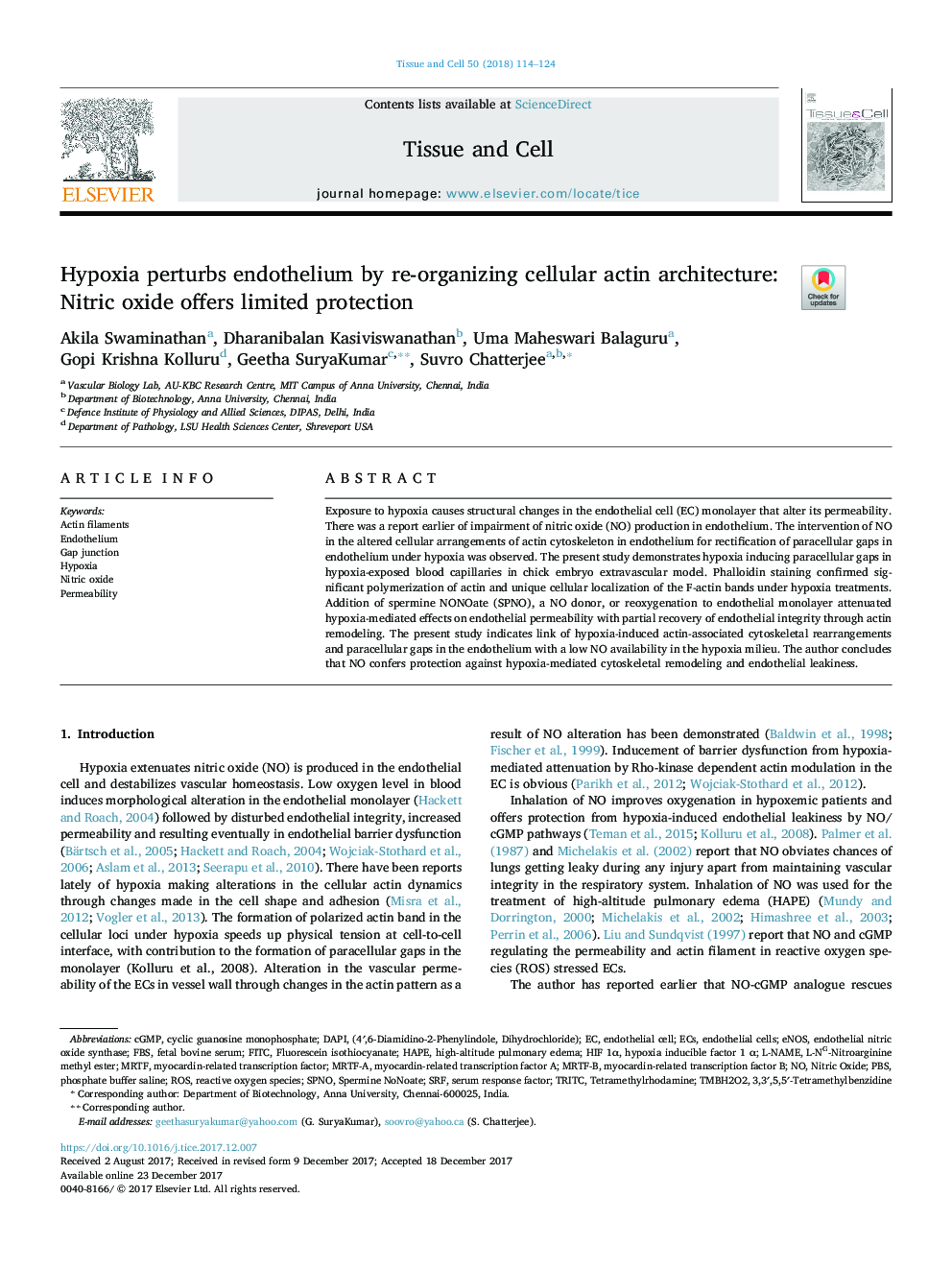| Article ID | Journal | Published Year | Pages | File Type |
|---|---|---|---|---|
| 8481046 | Tissue and Cell | 2018 | 11 Pages |
Abstract
Exposure to hypoxia causes structural changes in the endothelial cell (EC) monolayer that alter its permeability. There was a report earlier of impairment of nitric oxide (NO) production in endothelium. The intervention of NO in the altered cellular arrangements of actin cytoskeleton in endothelium for rectification of paracellular gaps in endothelium under hypoxia was observed. The present study demonstrates hypoxia inducing paracellular gaps in hypoxia-exposed blood capillaries in chick embryo extravascular model. Phalloidin staining confirmed significant polymerization of actin and unique cellular localization of the F-actin bands under hypoxia treatments. Addition of spermine NONOate (SPNO), a NO donor, or reoxygenation to endothelial monolayer attenuated hypoxia-mediated effects on endothelial permeability with partial recovery of endothelial integrity through actin remodeling. The present study indicates link of hypoxia-induced actin-associated cytoskeletal rearrangements and paracellular gaps in the endothelium with a low NO availability in the hypoxia milieu. The author concludes that NO confers protection against hypoxia-mediated cytoskeletal remodeling and endothelial leakiness.
Keywords
SRFmyocardin-related transcription factor ASpermine NONOateMyocardin-related transcription factorMRTFHAPEMRTF-ATRITCtetramethylrhodamineeNOSDAPIcGMPPBSFBSFITC3,3′,5,5′-tetramethylbenzidineECsl-NAMEl-NG-Nitroarginine methyl esterROShigh-altitude pulmonary edemaEndotheliumfetal bovine serumEndothelial cellEndothelial cellsendothelial nitric oxide synthasegap junctionserum response factorphosphate buffer salinefluorescein isothiocyanateactin filamentscyclic guanosine monophosphatePermeabilityNitric oxideHypoxiaReactive oxygen species
Related Topics
Life Sciences
Agricultural and Biological Sciences
Agricultural and Biological Sciences (General)
Authors
Akila Swaminathan, Dharanibalan Kasiviswanathan, Uma Maheswari Balaguru, Gopi Krishna Kolluru, Geetha SuryaKumar, Suvro Chatterjee,
